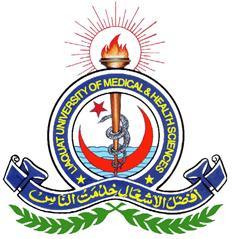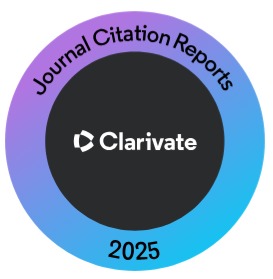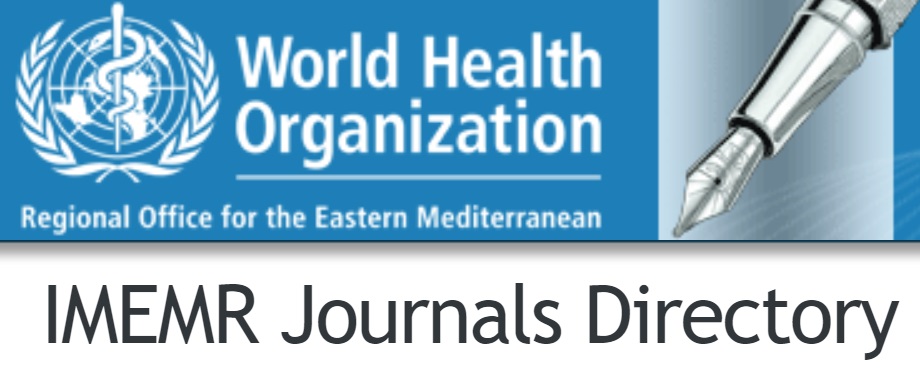Frequency of Urinary Tract Infection, Microbial Patterns and Drug Resistance in Diabetic Patients in a Tertiary Care Unit
Keywords:
Diabetes Miletus, Urinary Tract Infection, E. Coli, Antibiotic Resistance, Aminoglycosides, Quinolones.Abstract
Objective: To determine the frequency of UTIs in people with diabetes and identify local bacterial flora and antibiotic resistance.
Methodology: An observational, analytical, cross-sectional study was conducted at the Medicine Ward of Jinnah Medical and Dental College Hospital (now Sohail Trust Hospital) from January-December 2020. A convenient sampling technique was applied, and the sample size was 132. Diabetic patients >18 years of age were included. Data was collected on a structured questionnaire. A urine sample was sent for culture sensitivity. Any growing flora and their sensitivity/resistance to antibiotics were recorded. All the data were analysed using SPSS version 21.
Results: UTI was found in 31(23.5%) patients. Female gender, insulin therapy, and lower creatinine clearance were related to UTI, as shown by significant p values. Most common flora was E. Coli 26(84%), followed by Klebsiella 4(13%) and S. aureus 1(3%). E.Coli was 100% resistant to 3rd generation cephalosporins, 83.9% resistant to quinolones and 67.7% resistant to Penicillin (amoxicillin/clavulanic acid) and 43% resistant to aminoglycosides. Klebsiella was 100% resistant to Penicillin and quinolones and 85% to 3rd generation cephalosporin. E. coli and Klebsiella were 100% sensitive to carbapenems, nitrofurantoin and Fosfomycin, whereas S. Aureus was resistant to cloxacillin, clindamycin and clindamycin and quinolones, while sensitive to vancomycin., linezolid and aminoglycosides.
CONCLUSION: UTI was found in 23.5% of our diabetic patients; the most common organisms prevalent were E. Coli, Klebsiella and S. aureus, which was primarily resistant to Penicillins, Cephalosporins and quinolones while sensitive to nitrofurantoin, Fosfomycin and carbapenems.
References
Organization WH. The top 10 causes of death. World Health Organization. 9 December 2020. Available from: https://www.who.int/news-room/fact-sheets/detail/the-top-10-causes-of-death.
Atlas D. Demographic and Geographic Outline. Diabetes Atlas. 2021. Available from: https://www.diabetesatlas.org.
Zubair KU, Shah AH, Fawwad A, Sabir R, Butt A. Frequency of urinary tract infection and antibiotic sensitivity of uropathogens in patients with diabetes. Pak J Med Sci. 2019; 35(6): 1664-68. doi: 10.12669/pjms.35.6.115.
Ramrakhia S, Raja K, Dev K, Kumar A, Kumar V, Kumar B. Comparison of Incidence of Urinary Tract Infection in Diabetic vs Non-Diabetic and Associated Pathogens. Cureus. 2020; 12(9): e10500. doi: 10.7759/cureus.10500.
Woldemariam HK, Geleta DA, Tulu KD, Aber NA, Legese MH, Fenta GM et al. Common uropathogens and their antibiotic susceptibility pattern among diabetic patients. BMC Infect Dis. 2019; 19(1): 43. doi: 10.1186/s12879-018-3669-5.
Chen SL, Jackson SL, Boyko EJ. Diabetes mellitus and urinary tract infection: epidemiology, pathogenesis and proposed studies in animal models. J Urol. 2009; 182(6 Suppl): S51-6. doi:10.1016/j.juro.2009.07.090.
Nicolle LE, Bradley S, Colgan R, Rice JC, Schaeffer A, Hooton TM et al. Infectious disease society of America guidelines for the diagnosis and treatment of asymptomatic bacteriuria in adults. Clin Infect Dis. 2005; 40: 643-654.
doi: 10.1086/427507. Epub 2005 Feb 4.
Feleke Y, Mengistu Y, Enquselassie F. Diabetic infections: Clinical and bacteriological study at TikurAnbessa specialised university hospital, Addis Ababa, Ethiopia. Ethiop Med J. 2007; 45:171–9.
Aswani SM, Chandrashekar U, Shivashankara K, Pruthvi B. Clinical profile of urinary tract infections in diabetics and non-diabetics. Australas Med J. 2014; 7(1): 29-34. doi: 10.4066/AMJ.2014.1906.
Baqai R, Aziz M, Rasool G. Urinary tract infection in diabetic patients and biofilm formation of uropathogens. Infect Dis J Pak. 2008; 17(1): 7-9.
Laway BA, Nabi T, Bhat MH, Fomda BA. Prevalence, clinical profile and follow-up of asymptomatic bacteriuria in patients with type 2 diabetes-prospective case-control study in Srinagar. Diabetes Metab Syndr. 2021; 15(1): 455-459. doi: 10.1016/j.dsx.2020.12.043. Epub 2021 Jan 18.
Ahmad S, Hussain A, Khan MSA, Shakireen N, Ali I. Diabetes mellitus and urinary tract infection: Causative uropathogens, their antibiotic susceptibility pattern and the effects of glycemic status. Pak J Med Sci. 2020; 36(7): 1550-1557. doi: 10.12669/pjms.36.7.2881.
Kumar R, Kumar R, Perswami P, Taimur M, Shah A, Shoukat F. Clinical and Microbiological Profile of Urinary Tract Infections in Diabetic versus Non-Diabetic Individuals. Cureus. 2019; 11(8): e5464. doi: 10.7759/cureus.5464.
Kande S, Patro S, Panigrahi A, Khora PK, Pattnaik D. Prevalence of uropathogens and their antimicrobial resistance pattern among adult diabetic patients. Indian J Public Health. 2021 Jul-Sep;65(3):280-286. doi: 10.4103/ijph.IJPH_14 13_ 20.
Jha PK, Baral R, Khanal B. Prevalence of uropathogens ?in diabetic patients and their susceptibility pattern at a tertiary care centre in Nepal - A ?retrospective study. Int J Biomed Lab Sci. 2014; 3(2): 29-34.
Klingeberg A, Noll I, Willrich N, Feig M, Emrich D, Zill E et al. Antibiotic-Resistant E. coli in Uncomplicated Community-Acquired Urinary Tract Infection. Dtsch Arztebl Int. 2018; 115(29-30): 494-500. doi: 10.3238/arztebl.2018.0494.
Raeispour M, Ranjbar R. Antibiotic resistance, virulence factors and genotyping of Uropathogenic Escherichia coli strains. Antimicrob Resist Infect Control. 2018; 7: 118. doi:10.1186/s 13756-018-0411-4.
Forson AO, Menkah DA, Quarchie MN, Dhikrullahi SB, Olu-Taiwo M, Codjoe FS. Bacterial drug-resistance patterns and genetic diversity of bacteria-associated bacteriuria in diabetic
patients in Ghana. IJID Reg. 2021; 1: 142-149. doi: 10.1016/j.ijregi.2021.10.007.
Nath T, Das SK, Hazra S. Pattern of uropathogens and antibiotic sensitivity in diabetes patients attending to out - Patient department and diabetes clinic of a teaching hospital: A cross-sectional study. J Family Med Prim Care. 2021; 10(10): 3638-3643. doi: 10.4103/jfmpc.jfmpc_ 71_21.
Keshi L, Weiwei X, Shoulin L, Xiadong L, Hao W, Junhai J et al. Analysis of Drug Resistance of Extended-Spectrum Beta-Lactamases-Producing Escherichia Coli and Klebsiella Pneumoniae in Children with Urinary Tract Infection. Saudi Med J. 2019; 40(11): 1111-1115. doi: 10.15537/smj.2019. 11.24547.
Nigussie D, Amsalu A. Prevalence of uropathogen and their antibiotic resistance pattern among diabetic patients. Turk J Urol. 2017; 43(1): 85-92. doi: 10.5152/tud.2016.86155. Epub 2017 Jan 27.
Jagadeesan S, Tripathi BK, Patel P, Muthathal S. Urinary tract infection and Diabetes Mellitus-Etio-clinical profile and antibiogram: A North Indian perspective. J Family Med Prim Care. 2022; 11(5): 1902-1906. doi: 10.4103/jfmpc.jfmpc_2017_ 21. Epub 2022 May 14.
Nongrum S, Thaledi S, Singh VA, Narang VK, Mehta S, Garg R et al. Association of uropathogens with asymptomatic urinary tract infection in diabetes mellitus patients. Int J Curr Microbiol App Sci. 2016; 5(10): 355-61.
Yismaw G, Asrat D, Woldeamanuel Y, Unakal CG. Urinary tract infection: bacterial etiologies, drug resistance profile and associated risk factors in diabetic patients attending Gondar University Hospital, Gondar, Ethiopia. Eur J Exp Biol. 2012; 2(4): 889-898.
Downloads
Published
How to Cite
Issue
Section
License
Copyright (c) 2023 Journal of Liaquat University of Medical & Health Sciences

This work is licensed under a Creative Commons Attribution-NonCommercial-ShareAlike 4.0 International License.
Submission of a manuscript to the journal implies that all authors have read and agreed to the content of the undertaking form or the Terms and Conditions.
When an article is accepted for publication, the author(s) retain the copyright and are required to grant the publisher the right of first publication and other non-exclusive publishing rights to JLUMHS.
Articles published in the Journal of Liaquat University of Medical & health sciences are open access articles under a Creative Commons Attribution-Noncommercial - Share Alike 4.0 License. This license permits use, distribution and reproduction in any medium; provided the original work is properly cited and initial publication in this journal. This is in accordance with the BOAI definition of open access. In addition to that users are allowed to remix, tweak and build upon the work non-commercially as long as appropriate credit is given and the new creations are licensed under the identical terms. Or, in certain cases it can be stated that all articles and content there in are published under creative commons license unless stated otherwise.























